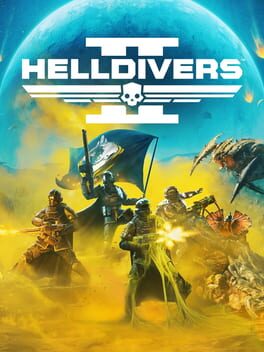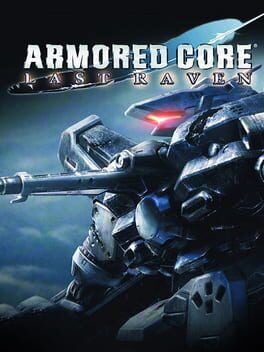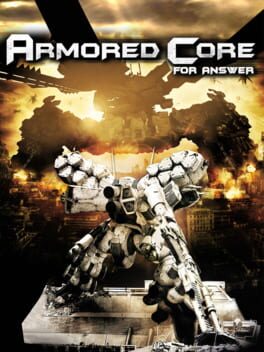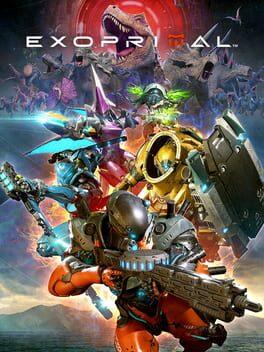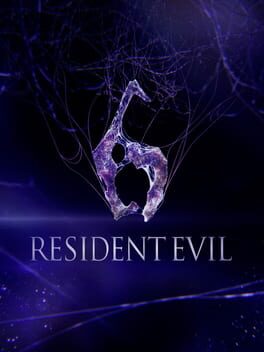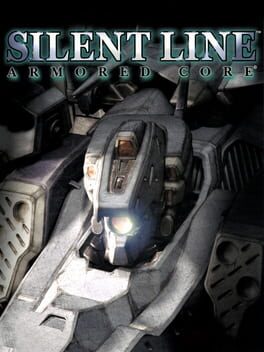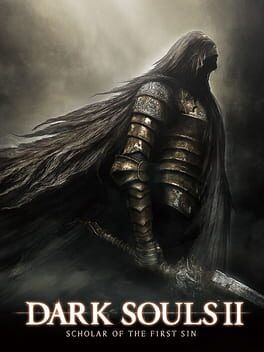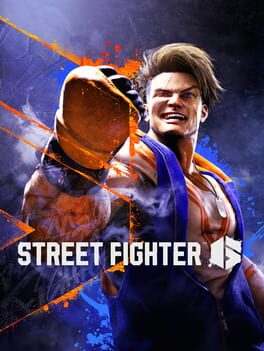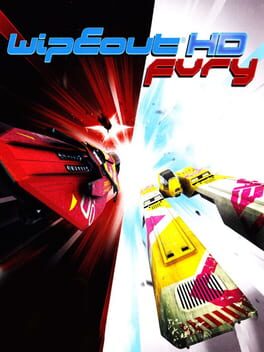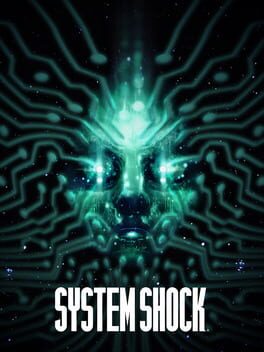TheMilio
Born out of a years long hiatus, while having to carry decades of heritage on his shoulders. Yet, it still manages to stand on his own legs.
Armored Core VI is unwilling to please everyone, but only who wishes to dig in its trial-and-error, experimentation and overwhelmingly fast gameplay. If you played any other game in the franchise, you'll know the drill. If you didn't, no pressure. This is by far the best entry point out of all the numbered titles.
Don't get me wrong, though. At first, I was worried. So much information on screen. The streamlining of the customization. And yet... All those concerns started to fade away at the first bosses and arena encounters.
There's no time to think about patterns, move-sets and such. The plan has to be made in the garage. In the mission, you are a relentless, implacable rancor-fueled man-machine of death and destruction. Drown the target with disgustingly massive amounts of firepower, attack using all of your resources with no restraints whatsoever. Execution is everything.
And then... When you'll overcome your next challenge, you'll start to feel "that". Swap out some components. Try a new approach. Slowly, carefully treading into the realm of removing your target from existence faster and better. Efficiency and effectiveness, constantly improving...
...And in that moment, all the fascination of this series finally reveals itself. The "thing" which makes this experience unique.
Unparalleled player agency.
Mission variety's on par with the series' top performers. Best environment art of the whole franchise. A lot of parts for a numbered entry, although with some restrains in the legs and arms departments. The boss encounters are by far the best of Armored Core VI's offering, and even if there's one entry which its "fun factor" could be debatable, his set-piece is still wonderful to go through. Arena's on the easy side, but its integration with the story is a nice touch, reminding somehow of Master of Arena. The narrative, just as the gameplay, keeps pushing faster and faster, with some beats, themes and characters reminiscent of Ace Combat along the expected references to older Armored Core games.
Multiplayer plays really good, even though it feels like an afterthought in terms of options and systems.
Shoji Kawamori's back in the mechanical design department, but you won't see any of it until you progress through the game. Do you wish to see the best the industry has to offer? Get at it.
Kota Hoshino's back in the soundtrack department, mixing compositions reminiscent of old entries along with a new dark, synth-wave, industrial tone, somehow close to DOOM (2016). The only match for a gritty, melancholic, hopeless landscape which, in hindsight, feels really close to the apocalypses of Last Raven and For Answer. All of that, alongside a crisp, state-of-the-art sound design and voice cast.
By the way, you won't be done with one play-through. Keep at it.
Technically-wise, the best release From Software ever put out, perfectly fitting the most sincerely written love letter to the mecha genre.
Armored Core has always been good. This is only the reminder.
Armored Core VI is unwilling to please everyone, but only who wishes to dig in its trial-and-error, experimentation and overwhelmingly fast gameplay. If you played any other game in the franchise, you'll know the drill. If you didn't, no pressure. This is by far the best entry point out of all the numbered titles.
Don't get me wrong, though. At first, I was worried. So much information on screen. The streamlining of the customization. And yet... All those concerns started to fade away at the first bosses and arena encounters.
There's no time to think about patterns, move-sets and such. The plan has to be made in the garage. In the mission, you are a relentless, implacable rancor-fueled man-machine of death and destruction. Drown the target with disgustingly massive amounts of firepower, attack using all of your resources with no restraints whatsoever. Execution is everything.
And then... When you'll overcome your next challenge, you'll start to feel "that". Swap out some components. Try a new approach. Slowly, carefully treading into the realm of removing your target from existence faster and better. Efficiency and effectiveness, constantly improving...
...And in that moment, all the fascination of this series finally reveals itself. The "thing" which makes this experience unique.
Unparalleled player agency.
Mission variety's on par with the series' top performers. Best environment art of the whole franchise. A lot of parts for a numbered entry, although with some restrains in the legs and arms departments. The boss encounters are by far the best of Armored Core VI's offering, and even if there's one entry which its "fun factor" could be debatable, his set-piece is still wonderful to go through. Arena's on the easy side, but its integration with the story is a nice touch, reminding somehow of Master of Arena. The narrative, just as the gameplay, keeps pushing faster and faster, with some beats, themes and characters reminiscent of Ace Combat along the expected references to older Armored Core games.
Multiplayer plays really good, even though it feels like an afterthought in terms of options and systems.
Shoji Kawamori's back in the mechanical design department, but you won't see any of it until you progress through the game. Do you wish to see the best the industry has to offer? Get at it.
Kota Hoshino's back in the soundtrack department, mixing compositions reminiscent of old entries along with a new dark, synth-wave, industrial tone, somehow close to DOOM (2016). The only match for a gritty, melancholic, hopeless landscape which, in hindsight, feels really close to the apocalypses of Last Raven and For Answer. All of that, alongside a crisp, state-of-the-art sound design and voice cast.
By the way, you won't be done with one play-through. Keep at it.
Technically-wise, the best release From Software ever put out, perfectly fitting the most sincerely written love letter to the mecha genre.
Armored Core has always been good. This is only the reminder.
2024
"A game for everyone is a game for no one."
To not lose yourself in the evolutionary process and to be true to your concept even after such substantial changes, it is not a small feat to accomplish.
Helldivers 2 competently achieves that, and even if some stuff is (rightfully so) "lost in translation" in the transition from a twin-stick shooter to a third person shooter, it stills lands as a remarkably confident exercise in game design.
The original Helldivers is pure commitment: every single choice in the moment-to-moment gameplay has a weight and a price to take in account for. Shooting requires standing still, reloading removes an entire magazine from your inventory, support takes time to be called in, friendly fire has to be taken in account, camera is shared between the four players, take too much damage and you're out, or on the ground, and so on. It's a constant knowledge check when it comes to enemies, weapon behavior, environments and mission objectives. So, how do you translate such a well-balanced 2D formula in a 3D game?
More commitment. More involvement. Simply put, "more".
Do you want to escape from the enemies? Unlike the original, stamina's so prominent it's almost always shown in your HUD. Almost depleted? Well, it takes time to recharge, and there's no cardio accelerator, or even all-terrain boots. Do you want to refill it, like, now? You can use a stim, but only if you're wounded. Isn't the stim also used for healing, though? Yeah, right.
Do you want to resupply? Unlike the original, the supply call-in is shared between all the players. It fills half of your resources. You have four charges. Are you empty, and in dare need of ammunition? Better tell your comrades.
This whole dance in between being proactive and reactive applies for, I kid you not, every single action in the game. Arrowhead Game Studios has flipped upside down the original game leaving no feature untouched. It's a "systemic" approach on every prop, element and feature, like how certain enemies interact with specific weapons, the physics, the (funny) rag-doll, the butter-smooth movement, and the crispy gun-play. There's literally nothing that gets in the way of fun and challenge, every single thing you see in your screen has a purpose, and the game-play's so unbelievably tight on both pad and mouse and keyboard.
It looks good. It plays good. It feels good. It's frustrating, it's fun, it's challenging, it's non-stop action, it's relentless. This thing can stand proud alongside the likes of Deep Rock Galactic as far as I'm concerned.
I went in with literally zero expectation and I was constantly blown away by how the game slowly and steadily reveals itself to you the deeper you dig in. The comedian tone is even more emphasized than the original, without feeling obnoxious. How did they manage that with what's basically Starship Troopers (derogatory) on steroids, it's beyond me.
If you want to suffer, go alone. If you want to have fun, go with randoms. But if you want a team-building and friendship-ending experience, bring your pals in. I swear, this thing has no right of being that much fun.
Must-play.
To not lose yourself in the evolutionary process and to be true to your concept even after such substantial changes, it is not a small feat to accomplish.
Helldivers 2 competently achieves that, and even if some stuff is (rightfully so) "lost in translation" in the transition from a twin-stick shooter to a third person shooter, it stills lands as a remarkably confident exercise in game design.
The original Helldivers is pure commitment: every single choice in the moment-to-moment gameplay has a weight and a price to take in account for. Shooting requires standing still, reloading removes an entire magazine from your inventory, support takes time to be called in, friendly fire has to be taken in account, camera is shared between the four players, take too much damage and you're out, or on the ground, and so on. It's a constant knowledge check when it comes to enemies, weapon behavior, environments and mission objectives. So, how do you translate such a well-balanced 2D formula in a 3D game?
More commitment. More involvement. Simply put, "more".
Do you want to escape from the enemies? Unlike the original, stamina's so prominent it's almost always shown in your HUD. Almost depleted? Well, it takes time to recharge, and there's no cardio accelerator, or even all-terrain boots. Do you want to refill it, like, now? You can use a stim, but only if you're wounded. Isn't the stim also used for healing, though? Yeah, right.
Do you want to resupply? Unlike the original, the supply call-in is shared between all the players. It fills half of your resources. You have four charges. Are you empty, and in dare need of ammunition? Better tell your comrades.
This whole dance in between being proactive and reactive applies for, I kid you not, every single action in the game. Arrowhead Game Studios has flipped upside down the original game leaving no feature untouched. It's a "systemic" approach on every prop, element and feature, like how certain enemies interact with specific weapons, the physics, the (funny) rag-doll, the butter-smooth movement, and the crispy gun-play. There's literally nothing that gets in the way of fun and challenge, every single thing you see in your screen has a purpose, and the game-play's so unbelievably tight on both pad and mouse and keyboard.
It looks good. It plays good. It feels good. It's frustrating, it's fun, it's challenging, it's non-stop action, it's relentless. This thing can stand proud alongside the likes of Deep Rock Galactic as far as I'm concerned.
I went in with literally zero expectation and I was constantly blown away by how the game slowly and steadily reveals itself to you the deeper you dig in. The comedian tone is even more emphasized than the original, without feeling obnoxious. How did they manage that with what's basically Starship Troopers (derogatory) on steroids, it's beyond me.
If you want to suffer, go alone. If you want to have fun, go with randoms. But if you want a team-building and friendship-ending experience, bring your pals in. I swear, this thing has no right of being that much fun.
Must-play.
2024
It's upmost rare to stumble upon something so obnoxiously obtuse in a time of excessive signposting and way-finding, even more when such stubbornness is perfectly coherent with all the aspects of its own design.
Dragon's Dogma II is exactly that - unwilling to accommodate its structure to the modern demands, unapologetically stuck in its own idea of commitment and restrains, and unfathomably fascinating when all those things come together.
Fortunately, they all work together way better in this sequel than its original, and that's because of the egregious amount of polishing that the weakest factors of Dragon's Dogma got. The open world got by far the best treatment, delightfully explorable, even with climbing not being an option in the game, which restricts you to jumping and platforming. This alone marks an unquantifiable step forward from the original. Fetch quests are gone for good - they're replaced by more wisely paced events which you may stumble upon in the world - or may not. Escort quests are too part of a more authentic approach to the game's role-playing features. Main quests and sides quests - they are all true to the elegance of a better written world. Time-gating is here too - featured in less quests, but more involved, more cleverly designed, better written, and overall way more remarkable. One of those, which you may access to even in the most early stages of the game, involves you fighting one of the most fearsome bosses of the game. You may get onboard, do an hike comparable to the original's griffin run, get to the quest, and ultimately fail it. That still counts as completed.
Failure as a state is one of the many accepted outcomes in Dragon's Dogma II. It perfectly fits how much this game is willing to make you miss stuff, purposely hiding chunks of (in corporate speak) content, where other games would basically bend to you and pray "please, experience this thing and extend your playtime", even if at the cost of immersion. DDII is not expecting you to do so - it's simply designed this way. It does not care about you, in that regard. This game's indifference to the player's concerns befalls in every aspect of its journey. The best way to experience it, then, is to live it without fear.
Such is the world you're brought into. One of the first quotes from the game recites how you will come to learn and understand from it - so you might be able to banish all the evil there is in. Nothing was more true than that: explore, learn its ins and outs, understand its opportunities and its threats, find new paths, discover new places, and then backtrack your steps. The reality of transforming a journey from the discovery of the unknown to the sheer mastery of its terrain and what lies ahead only by the knowledge gained its unique to this game - thanks only to how much it conceals itself from the player. There's not bar, value, number or anything that may encompass this feel - it's all about you experiencing things.
Here the real journey in the world of DDII starts. It begins when you stop thinking about the game as checklist in order to experience the game as it is, when you decide to let the flow of things guide you, even if just a bit. You still have the agency you had in the original, but the deepened combat system, the physicality of it, the rag-doll, the environmental interactions, the AI, the game's structure, the depth of the quests and their outcomes - everything is tailor-made to suit curiosity and resourcefulness before all. The consequences of basically everything you may stumble upon are so much deeply rooted in your actions that you may as well recount your findings to a friend playing the game - chances are, he's gonna tell you a whole different story.
Story which is not only a far better suited tale for a game of the likes of DDII, but it's a blank slate of sorts for you ingenuity to manifest. Chosen one yes, but no one gives a shit about it. Hell, some (if not most) even despise you because of that. You'll have the time and the chances to build your affinity with other characters, get to know others, gift them presents, follow them in enormous and entirely missable quest-lines and more. The involvement and commitment you see in every aspect of the game does not fall short here. Instead, some of the strongest story beats and choices you're going to come across are not outspokenly announced by the game. DDII simply requires your attention on most of the times in order to make sense of things. On that, if you come from the original you surely have the upper-hand, but then again - I do, and yet I couldn't keep track of the numbers of times I was left surprised by the game's machinations.
On that regard, it's almost eye-watering how much DDII respects not only your time (even with the commitment required to only enable fast travel) but also your dedication to the game's world and its systems: it knows the player's not here to be hand-holded or to be scolded, but to witness the sheer audacity by which this game is dedicated, obsessively so, to its involvement in things. Keep in mind that there's been an egregious UX pass from the previous but, truth to be told, the updates in accessibility did not detriment the game design. Crazy, right?
On that note, challenge is not born out of the gameplay itself - that's not the point. Apart from the initial hours, the plateau of DDII's dynamic difficulty is quickly reached - and its hardships soon become a memory, apart from some specific outliers. The truest of the test to the player resides in how he undertakes the game's structure. Will he engage the game to the fullest of its extent, or will he fall behind because of the game's unwillingness to please every single soul in this world?
True sovereignty of the world of DDII lies in using to its maximum extent every system that is given in game. You may come to a point when fast travel becomes not only a must - but also cheap and, in that regard, sustainable, even with a lot of upfront expenses to merchants. You can always sell stuff around - and there are small glimpses of an economy in the game, which you may use to your own advantage, such as some goods available only in specific countries of the game's world. You will find out how enhancing an item is not a do-and-done thing, but something with more depth and complexity than before. Camping starts as a luxury, for only to become one of the ways to maximize buffs for the upcoming boss fights. Nights start frightening - and then they become an opportunity to collect things you won't find elsewhere. Same goes for dungeons and bosses. You may find some items only if you visit such dungeons, and some monsters become a treat for your business as an Arisen. One of the vocations being literally the ultimate show of mastery of all of the move-sets of the game, alongside their abilities and spells. It really feels like a power climb of sorts, but in the best way possible. You're not asked to do so: you're doing this out of your own volition. On that, again - a game so coherent in and out of itself.
All of this ultimately became clear as day as soon as you stumble in the end-game. The original game holds nothing compared to this, and the way it's graciously intertwined with the game's world and narrative is just - chef kiss, really. All of this happens while the game unravels itself in the boldest way possible and, dare I say, unmatched even by the likes of other games which tried that thing before. All the systems you've got used to get turned around, and all the items which were collecting dust in your inventory have to be used, and extensively so. As if it wasn't enough, a spectacle which by itself alone eclipses the original Dragon's Dogma final stretch reveals itself right before your eyes. It's remarkable how much this game resonates and communicates with the original and its expansion in a way that, in my opinion, almost requires experiencing the full original game in order to truly taste the accomplishments performed here. I cannot delve more on this in fear of spoilers, but you won't be disappointed.
Some minor criticism can be done regarding the balancing of the vocations, with some really strong exceptions: nothing new if you come from the original game. Other minor things, truly nitpicks from my side, are the more streamlined systems (like the layered armor and dragon-forging) which are more straightforward in expense of... I dunno, flavor? The enemy variety is just a tad better than the original game, with some additions coming straight from Dragon's Dogma Dark Arisen. Some iconic monsters of the original game are, instead, inexplicably missing from the sequel: they do have their replacement, though, in the form of new bosses. Dungeons are way more than before, some of these even bigger than before, but less remarkable from the ones of the first game, level-design and environment art wise. The music in the sequel is missing the electric guitar from the original. Again, I'm really trying to be a pain in the ass to an otherwise phenomenal game.
What would be an unadulterated experience is sadly only stained by micro-transactions, which serve no purpose and have no place here, and the performance, which is still bearable, but subpar in some specific moments of the game. I cannot stress enough how those things are, in my point of view, not detrimental at all to the game's experience. With or without those - the game's still here, and it'll have the same things which will make you either fall in love with it or absolutely despise it. This remains unchanged from the previous iteration of the series - since this game is basically an exponential increase of all the things you adored and loathed of the original. Take it or leave it, really.
In the end it truly is, and I cannot understate it, a case of you get exactly what you're looking for in this game. The more you delve into the game's intricacies, the more you will be rewarded, in a way no other game can achieve. Do take your time with this one - you'll be thanking your past self for that.
Dragon's Dogma II was never about just its gameplay, or its stubbornness in the game systems, or its loose writing - it was always about everything coming all together. The single writings on the wall may encompass only some the strongest or weakest sides of the project, but it's when they become whole that its magic is finally revealed. It's about the war stories of your battles, the tales of your journey from a place to another. It's the unexpected, the unpredictable, the unaccounted for.
And all of that is unique - remarkably so. You'll never find anything like this in any other game for the time being.
Must-Play.
Dragon's Dogma II is exactly that - unwilling to accommodate its structure to the modern demands, unapologetically stuck in its own idea of commitment and restrains, and unfathomably fascinating when all those things come together.
Fortunately, they all work together way better in this sequel than its original, and that's because of the egregious amount of polishing that the weakest factors of Dragon's Dogma got. The open world got by far the best treatment, delightfully explorable, even with climbing not being an option in the game, which restricts you to jumping and platforming. This alone marks an unquantifiable step forward from the original. Fetch quests are gone for good - they're replaced by more wisely paced events which you may stumble upon in the world - or may not. Escort quests are too part of a more authentic approach to the game's role-playing features. Main quests and sides quests - they are all true to the elegance of a better written world. Time-gating is here too - featured in less quests, but more involved, more cleverly designed, better written, and overall way more remarkable. One of those, which you may access to even in the most early stages of the game, involves you fighting one of the most fearsome bosses of the game. You may get onboard, do an hike comparable to the original's griffin run, get to the quest, and ultimately fail it. That still counts as completed.
Failure as a state is one of the many accepted outcomes in Dragon's Dogma II. It perfectly fits how much this game is willing to make you miss stuff, purposely hiding chunks of (in corporate speak) content, where other games would basically bend to you and pray "please, experience this thing and extend your playtime", even if at the cost of immersion. DDII is not expecting you to do so - it's simply designed this way. It does not care about you, in that regard. This game's indifference to the player's concerns befalls in every aspect of its journey. The best way to experience it, then, is to live it without fear.
Such is the world you're brought into. One of the first quotes from the game recites how you will come to learn and understand from it - so you might be able to banish all the evil there is in. Nothing was more true than that: explore, learn its ins and outs, understand its opportunities and its threats, find new paths, discover new places, and then backtrack your steps. The reality of transforming a journey from the discovery of the unknown to the sheer mastery of its terrain and what lies ahead only by the knowledge gained its unique to this game - thanks only to how much it conceals itself from the player. There's not bar, value, number or anything that may encompass this feel - it's all about you experiencing things.
Here the real journey in the world of DDII starts. It begins when you stop thinking about the game as checklist in order to experience the game as it is, when you decide to let the flow of things guide you, even if just a bit. You still have the agency you had in the original, but the deepened combat system, the physicality of it, the rag-doll, the environmental interactions, the AI, the game's structure, the depth of the quests and their outcomes - everything is tailor-made to suit curiosity and resourcefulness before all. The consequences of basically everything you may stumble upon are so much deeply rooted in your actions that you may as well recount your findings to a friend playing the game - chances are, he's gonna tell you a whole different story.
Story which is not only a far better suited tale for a game of the likes of DDII, but it's a blank slate of sorts for you ingenuity to manifest. Chosen one yes, but no one gives a shit about it. Hell, some (if not most) even despise you because of that. You'll have the time and the chances to build your affinity with other characters, get to know others, gift them presents, follow them in enormous and entirely missable quest-lines and more. The involvement and commitment you see in every aspect of the game does not fall short here. Instead, some of the strongest story beats and choices you're going to come across are not outspokenly announced by the game. DDII simply requires your attention on most of the times in order to make sense of things. On that, if you come from the original you surely have the upper-hand, but then again - I do, and yet I couldn't keep track of the numbers of times I was left surprised by the game's machinations.
On that regard, it's almost eye-watering how much DDII respects not only your time (even with the commitment required to only enable fast travel) but also your dedication to the game's world and its systems: it knows the player's not here to be hand-holded or to be scolded, but to witness the sheer audacity by which this game is dedicated, obsessively so, to its involvement in things. Keep in mind that there's been an egregious UX pass from the previous but, truth to be told, the updates in accessibility did not detriment the game design. Crazy, right?
On that note, challenge is not born out of the gameplay itself - that's not the point. Apart from the initial hours, the plateau of DDII's dynamic difficulty is quickly reached - and its hardships soon become a memory, apart from some specific outliers. The truest of the test to the player resides in how he undertakes the game's structure. Will he engage the game to the fullest of its extent, or will he fall behind because of the game's unwillingness to please every single soul in this world?
True sovereignty of the world of DDII lies in using to its maximum extent every system that is given in game. You may come to a point when fast travel becomes not only a must - but also cheap and, in that regard, sustainable, even with a lot of upfront expenses to merchants. You can always sell stuff around - and there are small glimpses of an economy in the game, which you may use to your own advantage, such as some goods available only in specific countries of the game's world. You will find out how enhancing an item is not a do-and-done thing, but something with more depth and complexity than before. Camping starts as a luxury, for only to become one of the ways to maximize buffs for the upcoming boss fights. Nights start frightening - and then they become an opportunity to collect things you won't find elsewhere. Same goes for dungeons and bosses. You may find some items only if you visit such dungeons, and some monsters become a treat for your business as an Arisen. One of the vocations being literally the ultimate show of mastery of all of the move-sets of the game, alongside their abilities and spells. It really feels like a power climb of sorts, but in the best way possible. You're not asked to do so: you're doing this out of your own volition. On that, again - a game so coherent in and out of itself.
All of this ultimately became clear as day as soon as you stumble in the end-game. The original game holds nothing compared to this, and the way it's graciously intertwined with the game's world and narrative is just - chef kiss, really. All of this happens while the game unravels itself in the boldest way possible and, dare I say, unmatched even by the likes of other games which tried that thing before. All the systems you've got used to get turned around, and all the items which were collecting dust in your inventory have to be used, and extensively so. As if it wasn't enough, a spectacle which by itself alone eclipses the original Dragon's Dogma final stretch reveals itself right before your eyes. It's remarkable how much this game resonates and communicates with the original and its expansion in a way that, in my opinion, almost requires experiencing the full original game in order to truly taste the accomplishments performed here. I cannot delve more on this in fear of spoilers, but you won't be disappointed.
Some minor criticism can be done regarding the balancing of the vocations, with some really strong exceptions: nothing new if you come from the original game. Other minor things, truly nitpicks from my side, are the more streamlined systems (like the layered armor and dragon-forging) which are more straightforward in expense of... I dunno, flavor? The enemy variety is just a tad better than the original game, with some additions coming straight from Dragon's Dogma Dark Arisen. Some iconic monsters of the original game are, instead, inexplicably missing from the sequel: they do have their replacement, though, in the form of new bosses. Dungeons are way more than before, some of these even bigger than before, but less remarkable from the ones of the first game, level-design and environment art wise. The music in the sequel is missing the electric guitar from the original. Again, I'm really trying to be a pain in the ass to an otherwise phenomenal game.
What would be an unadulterated experience is sadly only stained by micro-transactions, which serve no purpose and have no place here, and the performance, which is still bearable, but subpar in some specific moments of the game. I cannot stress enough how those things are, in my point of view, not detrimental at all to the game's experience. With or without those - the game's still here, and it'll have the same things which will make you either fall in love with it or absolutely despise it. This remains unchanged from the previous iteration of the series - since this game is basically an exponential increase of all the things you adored and loathed of the original. Take it or leave it, really.
In the end it truly is, and I cannot understate it, a case of you get exactly what you're looking for in this game. The more you delve into the game's intricacies, the more you will be rewarded, in a way no other game can achieve. Do take your time with this one - you'll be thanking your past self for that.
Dragon's Dogma II was never about just its gameplay, or its stubbornness in the game systems, or its loose writing - it was always about everything coming all together. The single writings on the wall may encompass only some the strongest or weakest sides of the project, but it's when they become whole that its magic is finally revealed. It's about the war stories of your battles, the tales of your journey from a place to another. It's the unexpected, the unpredictable, the unaccounted for.
And all of that is unique - remarkably so. You'll never find anything like this in any other game for the time being.
Must-Play.
Armored Core has remarkable entries, but only some of them will generate really, really strong reactions once said. Last Raven is, by no means exaggerating, one of them, and for all the good and bad reasons.
As it goes for For Answer, this is one of the games in the series which features this "impeding doom" scenario, writing, and atmosphere. The latter being thick enough which will sell you on the game in its first beats - just as art direction, soundtrack and quality of life changes will do.
Those latter improvements are welcome, as they are needed in order to advance through the toughest parts of the title. From the original three we get five AC loadouts, the garage UI is completely revamped, the statistics sections too, the tuning is free of charge and not irreversible, and there's a whole new menu for any information regarding rival ACs, missions, world and story. Controls are carried over from Nexus and Nine-Breaker, but the old-school option still remains. So much is given...
...Only for the game to take it back, tenfold.
When people speak about this thing being hard, they are not lying or making it up. Parts can break down during a fight, worsening your AC performance in real time, and even make you unable to use an arm weapon. Those broken parts will have to be bought again in full at the shop, which makes experimenting harder, at least in your first play-through.
If Silent Line has the habit of dropping in ACs like MTs, Last Raven has the habit of dropping in bosses like ACs. If your performance was rewarded with a challenge before, now it's rewarded with a brick wall. Always expect the unexpected.
You won't bring OP-INTENSIFY here, everyone is a human plus, and most of the rival ACs are also over-tuned to the point of basically cheating against the player. All things which will generate frustration beyond everything you have experienced in the series, like "Destroy Floating Mines" or "B-1 Grand Chief".
That's because, even if the game is the biggest in terms of options - only some of them are viable. Those strong parts are, funny enough, the ones you won't be carrying over from Nexus, and instead finding in Last Raven. What you carry over from Nexus and Nine-Breaker is, instead, the EN balancing, lightweights being dead on arrival and weapons' spread making some of them borderline unusable. Adding in the game's habit to reward you with parts when you S-tier a mission, the pain points are now revealed. Yet how come this absolute disaster of a game is that praised?
Well, this thing is just - that - good. Arguably, some of the best the series can offer. And that can easily be explained by the game's high-level structure.
Time is of the essence. You, other ravens, corporations and independent warlords all fight for a piece of the remaining pie in this post-apocalyptic world soon to be engulfed in the apocalypse once again. You almost always have a choice, which will bring you towards one of the many endings this game offers.
Last Raven is more than a statement. Everyone has a bounty on his head. If you get them - the money's yours. Once you get them - they're gone for good, written out of that "blacklist" of sorts. You can still fight them in the VR Arena which, by the way, offers by far the toughest rival AC in the whole series.
The parts and missions offering is the biggest in the series, and the challenge arguably over-delivers in that regard too. With that said - do not be afraid, or at least, do be in a reasonable level. This is one of the some ACs where, even if you nail the garage right, the execution is on a whole other league. Be prepared to retry some encounters over and over.
Difficulty is, again, overall higher than all of the previous entries, but your experience will radically change depending on which path you do end up choosing. The easiest routes are tough, but doable. The toughest ones are on another level. If you want to go through the easiest, or toughest, or all of the routes - your call, but do keep at least your first play-through in the blind.
The most painful entry of the series is also one of the most joyful to play with. The sheer variety of options in all regards, the quality of life changes, and the technical improvements all deliver towards the best of the late 3rd generation and, arguably, some of the best action in the whole series.
Recommended.
As it goes for For Answer, this is one of the games in the series which features this "impeding doom" scenario, writing, and atmosphere. The latter being thick enough which will sell you on the game in its first beats - just as art direction, soundtrack and quality of life changes will do.
Those latter improvements are welcome, as they are needed in order to advance through the toughest parts of the title. From the original three we get five AC loadouts, the garage UI is completely revamped, the statistics sections too, the tuning is free of charge and not irreversible, and there's a whole new menu for any information regarding rival ACs, missions, world and story. Controls are carried over from Nexus and Nine-Breaker, but the old-school option still remains. So much is given...
...Only for the game to take it back, tenfold.
When people speak about this thing being hard, they are not lying or making it up. Parts can break down during a fight, worsening your AC performance in real time, and even make you unable to use an arm weapon. Those broken parts will have to be bought again in full at the shop, which makes experimenting harder, at least in your first play-through.
If Silent Line has the habit of dropping in ACs like MTs, Last Raven has the habit of dropping in bosses like ACs. If your performance was rewarded with a challenge before, now it's rewarded with a brick wall. Always expect the unexpected.
You won't bring OP-INTENSIFY here, everyone is a human plus, and most of the rival ACs are also over-tuned to the point of basically cheating against the player. All things which will generate frustration beyond everything you have experienced in the series, like "Destroy Floating Mines" or "B-1 Grand Chief".
That's because, even if the game is the biggest in terms of options - only some of them are viable. Those strong parts are, funny enough, the ones you won't be carrying over from Nexus, and instead finding in Last Raven. What you carry over from Nexus and Nine-Breaker is, instead, the EN balancing, lightweights being dead on arrival and weapons' spread making some of them borderline unusable. Adding in the game's habit to reward you with parts when you S-tier a mission, the pain points are now revealed. Yet how come this absolute disaster of a game is that praised?
Well, this thing is just - that - good. Arguably, some of the best the series can offer. And that can easily be explained by the game's high-level structure.
Time is of the essence. You, other ravens, corporations and independent warlords all fight for a piece of the remaining pie in this post-apocalyptic world soon to be engulfed in the apocalypse once again. You almost always have a choice, which will bring you towards one of the many endings this game offers.
Last Raven is more than a statement. Everyone has a bounty on his head. If you get them - the money's yours. Once you get them - they're gone for good, written out of that "blacklist" of sorts. You can still fight them in the VR Arena which, by the way, offers by far the toughest rival AC in the whole series.
The parts and missions offering is the biggest in the series, and the challenge arguably over-delivers in that regard too. With that said - do not be afraid, or at least, do be in a reasonable level. This is one of the some ACs where, even if you nail the garage right, the execution is on a whole other league. Be prepared to retry some encounters over and over.
Difficulty is, again, overall higher than all of the previous entries, but your experience will radically change depending on which path you do end up choosing. The easiest routes are tough, but doable. The toughest ones are on another level. If you want to go through the easiest, or toughest, or all of the routes - your call, but do keep at least your first play-through in the blind.
The most painful entry of the series is also one of the most joyful to play with. The sheer variety of options in all regards, the quality of life changes, and the technical improvements all deliver towards the best of the late 3rd generation and, arguably, some of the best action in the whole series.
Recommended.
2023
2012
2002
When something stays for one or two games, it could be a mistake. When something sticks around for two and an half generations - it's deliberate.
That's regarding the control scheme of Armored Core Silent Line. It's the same unforgiving mess which will make your hands sweat and some of your fingers hurt. But in Silent Line - it doesn't matter.
It doesn't since the AC feels butter smooth, the controls somehow do too, and everything is tighter and more "present". There's something inexplicable about how much feedback, animations, VFXs and sound design really sell the mech action's fantasy - and that's happening right here. This game wants to be obliterated by you, and it's asking that so much so you can already find out in the shop.
Shop which features a plethora of left-handed weapons which somehow mirror the right-handed ranged ones, bringing into the mix the ability to dual-wield without having to rely on weapon arms. Extensions get stronger, so much so that stuff like the MEST-MX/CROW is so strong you may just make an AC design just around that one component. And that's for starters.
If AC3 was somehow a bit tuned towards the heavyweights, here every kind of AC finds its own volition: you want a lightweight, speedy, flaking build? That's viable. A middleweight, classic Moonlight Karasawa action? Arguably some of the best renditions of both weapons.
Renditions which do not stop at weapons. Being AC3 kind of a retelling of the original Armored Core, you guessed it - Silent Line tries to make you feel like in Master of Arena. Those are big fat shoes to fill, and the game delivers on that. Partially. That will become soon understandable once you finish the title.
Until you finish though, get your ass ready for some kicking.
This thing is not joking around. Even if you bring OP-INTENSIFY, which by the way is the best rendition of the human plus system in the whole series, some if not the most of the missions are going to test your skills to the maximum. It won't take much long for ACs to drop like they were MTs, and duo or trio AC fights to become basically the norm. By that point, though, you'll be ready.
May it be a quick tour of the garage, or a stop by the arena. Silent Line, as said before, is almost overwhelming with options in order to build your tailor-made AC: being it so easy to develop a play-style-defining AC, you will spend way more time testing and trying out more stuff. That's also because one of the games featuring weapon variants, which share meshes with already existing weaponry, but with different statistics and colors.
Story goes hard. Soundtrack goes hard. If there's something really worth complaining, again, it's probably the very, very last section of the game. That's only because it under-delivers in the challenge department in a game which, mind you, it's tough, but absolutely forgiving.
Some of the best that the series has to offer is right there. Taking into account AC3, the early 3rd generation is probably quality-wise the most consistent the series has ever been.
Recommended.
That's regarding the control scheme of Armored Core Silent Line. It's the same unforgiving mess which will make your hands sweat and some of your fingers hurt. But in Silent Line - it doesn't matter.
It doesn't since the AC feels butter smooth, the controls somehow do too, and everything is tighter and more "present". There's something inexplicable about how much feedback, animations, VFXs and sound design really sell the mech action's fantasy - and that's happening right here. This game wants to be obliterated by you, and it's asking that so much so you can already find out in the shop.
Shop which features a plethora of left-handed weapons which somehow mirror the right-handed ranged ones, bringing into the mix the ability to dual-wield without having to rely on weapon arms. Extensions get stronger, so much so that stuff like the MEST-MX/CROW is so strong you may just make an AC design just around that one component. And that's for starters.
If AC3 was somehow a bit tuned towards the heavyweights, here every kind of AC finds its own volition: you want a lightweight, speedy, flaking build? That's viable. A middleweight, classic Moonlight Karasawa action? Arguably some of the best renditions of both weapons.
Renditions which do not stop at weapons. Being AC3 kind of a retelling of the original Armored Core, you guessed it - Silent Line tries to make you feel like in Master of Arena. Those are big fat shoes to fill, and the game delivers on that. Partially. That will become soon understandable once you finish the title.
Until you finish though, get your ass ready for some kicking.
This thing is not joking around. Even if you bring OP-INTENSIFY, which by the way is the best rendition of the human plus system in the whole series, some if not the most of the missions are going to test your skills to the maximum. It won't take much long for ACs to drop like they were MTs, and duo or trio AC fights to become basically the norm. By that point, though, you'll be ready.
May it be a quick tour of the garage, or a stop by the arena. Silent Line, as said before, is almost overwhelming with options in order to build your tailor-made AC: being it so easy to develop a play-style-defining AC, you will spend way more time testing and trying out more stuff. That's also because one of the games featuring weapon variants, which share meshes with already existing weaponry, but with different statistics and colors.
Story goes hard. Soundtrack goes hard. If there's something really worth complaining, again, it's probably the very, very last section of the game. That's only because it under-delivers in the challenge department in a game which, mind you, it's tough, but absolutely forgiving.
Some of the best that the series has to offer is right there. Taking into account AC3, the early 3rd generation is probably quality-wise the most consistent the series has ever been.
Recommended.
2023
2014
2009
2023
An enormous step forward for the series, which stubbornly and rightly so refuses to move away from his arcade roots.
Midnight Club 3 is an improvement on most if not all aspects of the previous entries of the series, adding in the already exhilarating mix an addition which will find its way in the 6th generation era of racing games: car customization.
This is not only a way to slowly guide the player towards faster (and it gets crazy fast) racing but also a chance to add in more player expression: the offering is not quite crazy as Need for Speed Underground 2 or Pro Street, but Midnight Club 3 fixes this by giving fine-tuned options for every car types. Just as this concept will find his way in Need for Speed Carbon, the car classes and types featured are a way to specialize your play-style into a more hit-and-run, aggressive or precise approach. You won't need to try every single thing out in order to reach the credits, but it's highly advised, as variety truly is the spice of this game.
The car collection is not only huge but also quite unique: a never-seen-before focus on saloons and muscle cars, a lot of high-end super-cars, most of the Japanese cars you'd be fond of, and bikes. If you're into rarely seen cars in video-games, this is the stuff you should try out. The environments are ever-so detailed, taking again crazy approaches with some vertical, almost flying sections. San Diego, Atlanta and Detroit all feature an almost "7th generation" color scheme and blur, but their designs are varied enough in order to not become stale.
Thing which could happen given how huge this game is. Tons of rivals, tournaments and race series. The rivals are not quite characterized as they do in Midnight Club 2, the unordered races are quite rare, and the police presence can sometimes be one-sided...
But all those things are pardoned once you try the handling model.
This handles like a dream. The arcade, float-y, and "pick-up and play" approach still remains the same: the wackiness and often unbearable frustration of the physics, the traffic and some races still remains.
And that's what makes this series special: an adrenaline-pumping speed freak, which can either end very well or very bad. There's no in between. Once again, knowing the city is everything. More so than ever, knowing your car, its "ins-and-outs", and the ability you're provided with that car type.
DUB Edition Remix features an additional location, Tokyo, bundled in a Challenge mode where you can bring your cars from the Career, race them here and bring your prizes back. Not quite striking as the other locations but a welcome addition for sure. Obvious as it may sound, the featured songs are a perfect companion to the game's already thick atmosphere: the selection is big, striking and once again varied.
It can't be explained how the most frustrating aspects of this series are, in the same time, the most exhilarating and engaging ones. Embrace the chaos, and find your way in.
Recommended.
Midnight Club 3 is an improvement on most if not all aspects of the previous entries of the series, adding in the already exhilarating mix an addition which will find its way in the 6th generation era of racing games: car customization.
This is not only a way to slowly guide the player towards faster (and it gets crazy fast) racing but also a chance to add in more player expression: the offering is not quite crazy as Need for Speed Underground 2 or Pro Street, but Midnight Club 3 fixes this by giving fine-tuned options for every car types. Just as this concept will find his way in Need for Speed Carbon, the car classes and types featured are a way to specialize your play-style into a more hit-and-run, aggressive or precise approach. You won't need to try every single thing out in order to reach the credits, but it's highly advised, as variety truly is the spice of this game.
The car collection is not only huge but also quite unique: a never-seen-before focus on saloons and muscle cars, a lot of high-end super-cars, most of the Japanese cars you'd be fond of, and bikes. If you're into rarely seen cars in video-games, this is the stuff you should try out. The environments are ever-so detailed, taking again crazy approaches with some vertical, almost flying sections. San Diego, Atlanta and Detroit all feature an almost "7th generation" color scheme and blur, but their designs are varied enough in order to not become stale.
Thing which could happen given how huge this game is. Tons of rivals, tournaments and race series. The rivals are not quite characterized as they do in Midnight Club 2, the unordered races are quite rare, and the police presence can sometimes be one-sided...
But all those things are pardoned once you try the handling model.
This handles like a dream. The arcade, float-y, and "pick-up and play" approach still remains the same: the wackiness and often unbearable frustration of the physics, the traffic and some races still remains.
And that's what makes this series special: an adrenaline-pumping speed freak, which can either end very well or very bad. There's no in between. Once again, knowing the city is everything. More so than ever, knowing your car, its "ins-and-outs", and the ability you're provided with that car type.
DUB Edition Remix features an additional location, Tokyo, bundled in a Challenge mode where you can bring your cars from the Career, race them here and bring your prizes back. Not quite striking as the other locations but a welcome addition for sure. Obvious as it may sound, the featured songs are a perfect companion to the game's already thick atmosphere: the selection is big, striking and once again varied.
It can't be explained how the most frustrating aspects of this series are, in the same time, the most exhilarating and engaging ones. Embrace the chaos, and find your way in.
Recommended.

